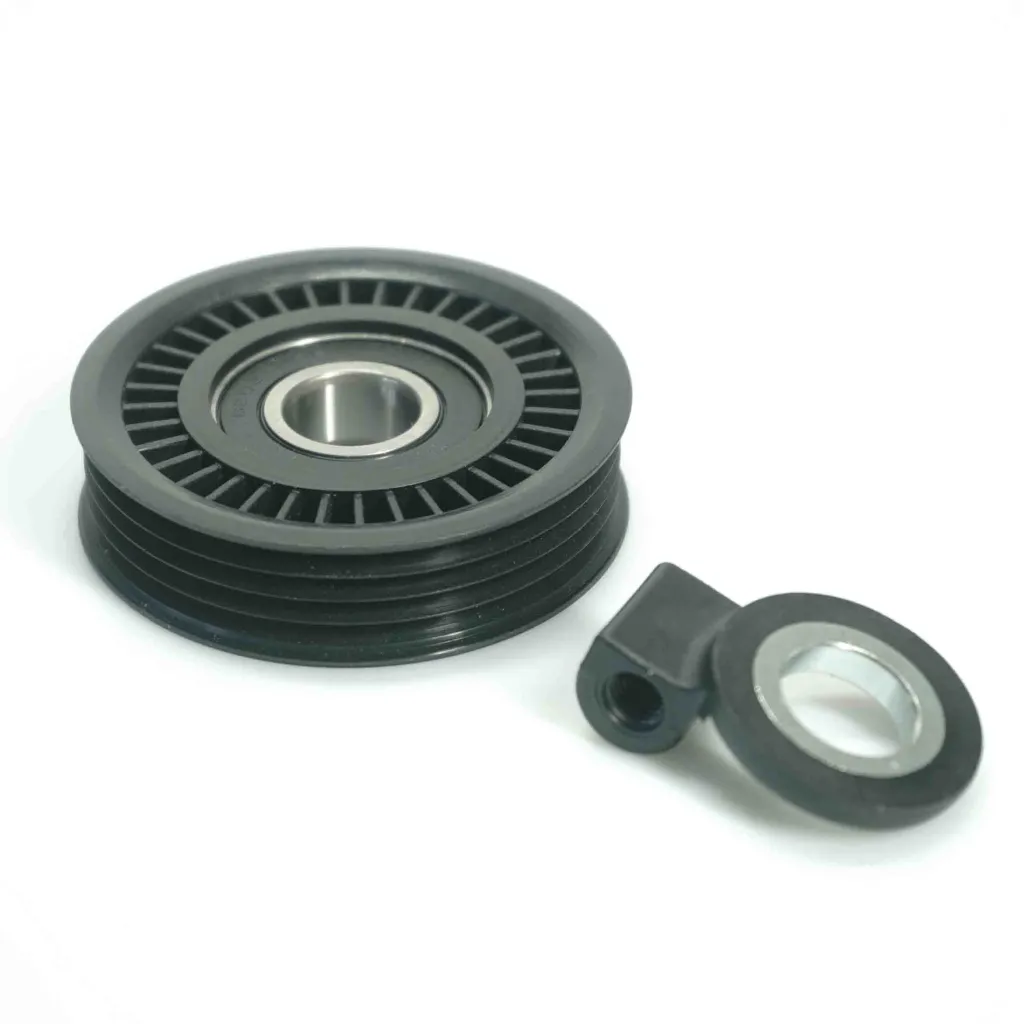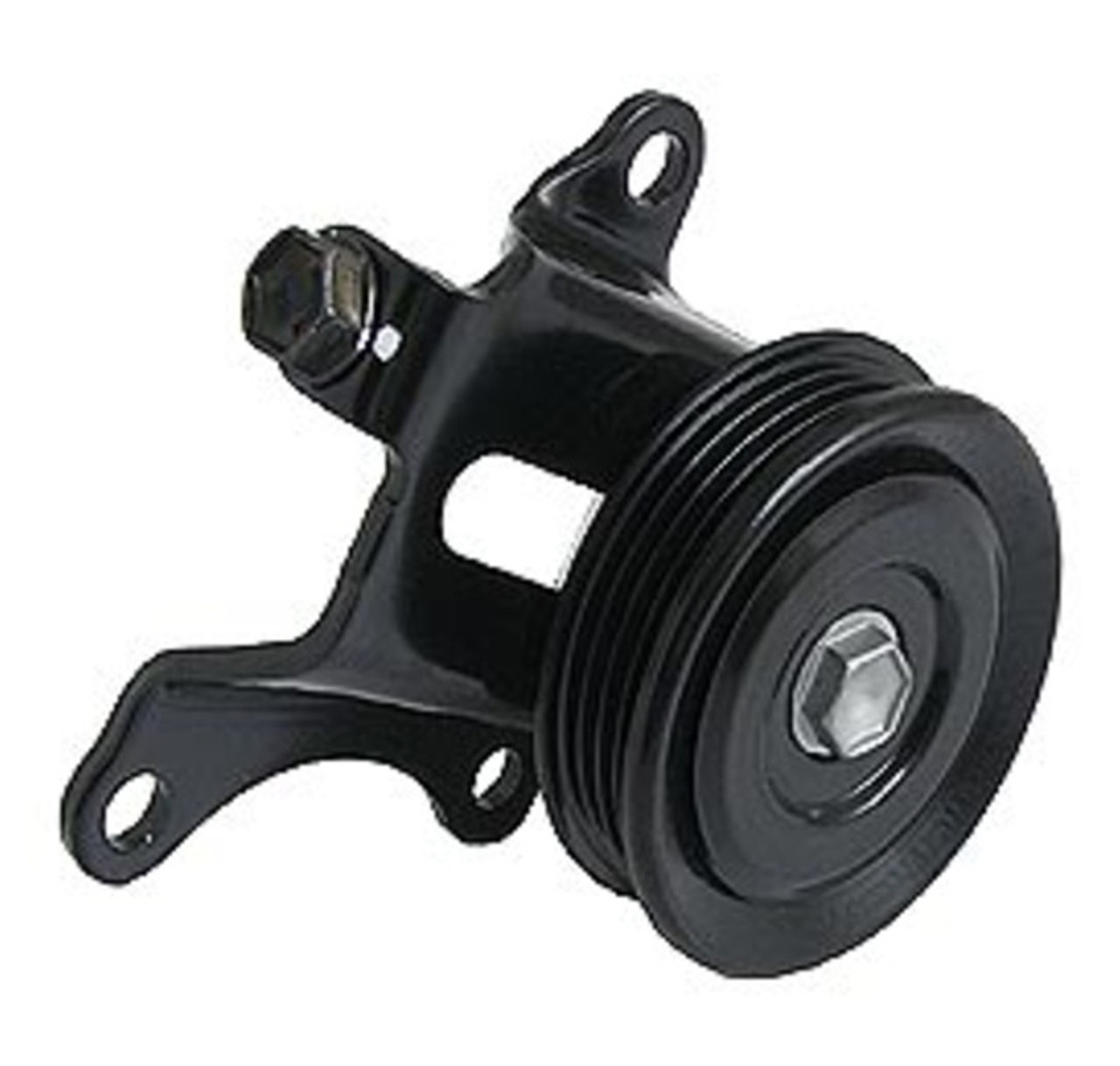Product Description
Product Description
1.Teeth Profile:
|
HTD: |
3M,5M,8M,14M,20M |
|||
|
T&AT: |
T2.5,T5,T10, AT5,AT10,AT20 |
|||
|
STPD: |
S2M,S3M,S4.5M,S5M,S8M,S14M |
|||
|
RPP: |
5M,8M,14M,20M |
|||
|
PGGT (PowerGrip GT): |
2MR,3MR,5MR,8MR,14MR |
|||
2. Materials:
Aluminum timing pulleys
Characteristics:
1.suitable for moderate power transmission
2.light weight / reduced rotational inertia
3.moderate chemical and corrosion resistance
4.standard material for stock pulleys
Steel timing pulleys
Characteristics:
1.suitable for high power transmission
2.durable
3.limited chemical and corrosion resistance
4.aesthetic material
3.Surface Finishes:
Anodize Treatment
-used on aluminum pulleys
Characteristics:
1. Increased chemical and corrosion resistance
2. Available in natural, black, or colored
3. Limited increase of surface hardness
4. Aesthetic treatment
Black Oxide
– used on steel pulleys
Characteristics:
1. Increased chemical and corrosion resistance
2. Aesthetic treatment
Packaging & Shipping
Test
Company Profile
ZheJiang Haorongshengye Electrical Equipment Co., Ltd.
1. Was founded in 2008
2. Our Principle:
“Credibility Supremacy, and Customer First”
3. Our Promise:
“High quality products, and Excellent Service”
4. Our Value:
“Being Honesty, Doing the Best, and Long-lasting Development”
5. Our Aim:
“Develop to be a leader in the power transmission parts industry in the world”
|
6.Our services: |
1).Competitive price |
|||
|
2).High quality products |
||||
|
3).OEM service or can customized according to your drawings |
||||
|
4).Reply your inquiry in 24 hours |
||||
|
5).Professional technical team 24 hours online service |
||||
|
6).Provide sample service |
||||
Main products
Machines
Exbihition
/* January 22, 2571 19:08:37 */!function(){function s(e,r){var a,o={};try{e&&e.split(“,”).forEach(function(e,t){e&&(a=e.match(/(.*?):(.*)$/))&&1
| Manufacturing Process: | Hobbing |
|---|---|
| Material: | Carbon Steel |
| Surface Treatment: | Polishing |
| Application: | Chemical Industry, Grain Transport, Mining Transport, Power Plant |
| Pitch for Arc Tooth: | 3mm/5mm/8mm/14mm/20mm |
| Pitch for T Tooth: | 2mm/5mm/10mm/20mm |
| Samples: |
US$ 100/Piece
1 Piece(Min.Order) | |
|---|
| Customization: |
Available
| Customized Request |
|---|

What safety considerations should be kept in mind when using tension pulleys?
When using tension pulleys, it is crucial to prioritize safety to prevent accidents and ensure the well-being of personnel. Here are some important safety considerations to keep in mind:
1. Proper Guarding: Tension pulleys should be adequately guarded to prevent accidental contact with moving parts. Guards should be designed and installed in accordance with applicable safety standards and regulations. They should be securely attached and provide sufficient coverage to prevent access to the pulley and associated belts, reducing the risk of entanglement or injury.
2. Lockout/Tagout Procedures: Before performing any maintenance or repair tasks on machinery or equipment with tension pulleys, proper lockout/tagout procedures should be followed. This involves isolating the power source, de-energizing the system, and securing it with locks or tags to prevent accidental startup. Lockout/tagout procedures help protect personnel from unexpected movement or energization of the pulleys during maintenance activities.
3. Training and Awareness: Adequate training should be provided to personnel involved in the operation, maintenance, and servicing of machinery with tension pulleys. They should be educated about the potential hazards associated with tension pulleys, such as entanglement, pinch points, and rotating parts. Training should cover safe work practices, proper use of personal protective equipment (PPE), and emergency procedures. Regular safety reminders and refresher training sessions are also beneficial to maintain awareness and reinforce safe behaviors.
4. Proper Use of Personal Protective Equipment (PPE): Depending on the specific hazards present, appropriate personal protective equipment should be worn by personnel working with tension pulleys. This may include safety glasses, gloves, hearing protection, and, if necessary, respiratory protection. PPE helps protect against potential injuries from flying debris, contact with moving parts, and exposure to noise or airborne contaminants.
5. Maintaining Proper Belt Tension: It is important to maintain proper belt tension within the recommended range specified by the manufacturer. Insufficient tension can result in belt slippage, while excessive tension can overload the system and lead to premature wear or failure. Regular inspections and adjustments should be performed to ensure the tension is within the specified limits. This helps maintain safe and efficient operation of the tension pulleys and associated equipment.
6. Regular Inspection and Maintenance: Tension pulleys should be regularly inspected for signs of wear, damage, or misalignment. Any issues should be promptly addressed to prevent potential hazards. Routine maintenance, such as cleaning, lubrication, and replacement of worn components, should be carried out as per the manufacturer’s recommendations. Regular inspections and maintenance help identify and rectify potential safety concerns before they escalate.
7. Proper Lifting and Handling: When handling tension pulleys or performing maintenance tasks, proper lifting techniques and equipment should be used to prevent strains or injuries. Pulleys can be heavy and awkward to handle, so mechanical lifting aids or assistance from trained personnel may be necessary. Adequate precautions should be taken to prevent pulleys from falling or rolling during transportation or installation.
8. Clear Communication and Signage: Clear communication and proper signage should be in place to indicate the presence of tension pulleys and associated hazards. Warning signs, labels, or color-coded markings can help alert personnel to potential dangers and remind them of safety precautions. Safety instructions, including emergency contact information, should be prominently displayed in the vicinity of tension pulleys.
9. Regular Risk Assessments: Conducting regular risk assessments specific to the machinery and equipment using tension pulleys is essential. This helps identify potential hazards, assess their severity and likelihood, and implement appropriate control measures. Risk assessments should be reviewed periodically and updated as necessary to account for changes in equipment, processes, or operating conditions.
By adhering to these safety considerations, the risks associated with tension pulleys can be minimized, creating a safer working environment for personnel and reducing the likelihood of accidents or injuries.

What maintenance procedures are necessary to ensure the reliability of tension pulleys?
Proper maintenance procedures are essential to ensure the reliability and longevity of tension pulleys. Regular maintenance helps identify and address potential issues before they escalate, minimizing the risk of pulley failure and maximizing their performance. Here are some key maintenance procedures necessary for ensuring the reliability of tension pulleys:
1. Visual Inspection: Perform regular visual inspections of the tension pulleys to check for any signs of wear, damage, or misalignment. Look for worn-out or cracked pulley grooves, bent or loose pulley arms, and any abnormalities in the pulley structure. If any issues are identified, they should be addressed promptly to prevent further damage or failure.
2. Lubrication: Some tension pulleys may require lubrication to minimize friction and ensure smooth rotation. Refer to the manufacturer’s recommendations for the appropriate lubricant type and interval. Apply the lubricant as instructed, taking care not to over-apply, as excessive lubrication can attract dust and debris, leading to pulley slippage or reduced performance.
3. Belt Tension Adjustment: Regularly check the tension of the belts and adjust as necessary. Improper belt tension can result in slippage, reduced power transmission, and premature wear of the belts and pulleys. Follow the manufacturer’s guidelines to determine the correct tension range for the specific application and adjust the tension accordingly using the appropriate tensioning mechanism.
4. Belt Condition Monitoring: Monitor the condition of the belts that are connected to the tension pulleys. Check for signs of wear, cracking, fraying, or stretching. Replace any damaged or worn-out belts promptly to prevent belt failure, which can put excessive strain on the tension pulleys and lead to their premature failure.
5. Alignment: Proper alignment between the tension pulleys and the driven components is crucial for optimal performance and reliability. Misalignment can cause uneven belt wear, increased friction, and premature pulley failure. Regularly check the alignment using alignment tools or laser alignment systems and make adjustments as needed.
6. Cleaning: Keep the tension pulleys clean and free from debris, dust, or buildup. Regularly remove any accumulated dirt or contaminants using a soft brush or cloth. Pay attention to the pulley grooves and ensure they are clear of debris, as obstructions can affect belt engagement and performance.
7. Replacement of Worn Components: Over time, certain components of tension pulleys, such as bearings or bushings, may wear out and require replacement. Monitor the condition of these components during inspections and replace them as needed to maintain the reliability and smooth operation of the tension pulleys.
8. Record-Keeping: Maintain a record of maintenance activities performed on the tension pulleys, including inspection dates, adjustments made, and any repairs or replacements carried out. This record can help track the maintenance history, identify recurring issues, and facilitate future maintenance planning.
It is important to note that maintenance procedures may vary depending on the specific type and design of tension pulleys. Always refer to the manufacturer’s guidelines and recommendations for the particular pulley model to ensure the appropriate maintenance procedures are followed.
By implementing regular maintenance procedures and addressing any identified issues promptly, the reliability of tension pulleys can be enhanced, resulting in improved performance, reduced downtime, and extended service life.

What types of belts or cables are typically used with tension pulleys?
Tension pulleys, also known as idler pulleys or belt tensioners, are designed to work in conjunction with specific types of belts or cables. The choice of belt or cable depends on the application, load requirements, environmental conditions, and other factors. Here’s a detailed explanation of the types of belts or cables that are typically used with tension pulleys:
1. V-Belts: V-belts, also known as Vee belts, are a common type of belt used with tension pulleys. They have a trapezoidal cross-section and are designed to fit into the groove of the pulley wheel. V-belts are commonly used in automotive applications, industrial machinery, and power transmission systems.
2. Serpentine Belts: Serpentine belts are flat, wide belts with a ribbed surface on one side. They are used in modern automotive engines to drive multiple components such as the alternator, air conditioning compressor, power steering pump, and water pump. Tension pulleys for serpentine belts are designed to accommodate the ribbed surface and maintain proper tension across the entire belt.
3. Timing Belts: Timing belts, also known as toothed belts, have a series of evenly spaced teeth on the inner surface. They are used in applications that require precise synchronization of the rotational motion, such as in internal combustion engines. Tension pulleys for timing belts are designed with toothed surfaces that match the teeth on the belt, ensuring proper engagement and tension control.
4. Flat Belts: Flat belts are simple, flat belts without any V-grooves or teeth. They are used in a variety of applications, including conveyors, industrial machinery, and printing presses. Tension pulleys for flat belts provide a smooth surface for the belt to run on and maintain tension through contact friction.
5. Cables and Wire Ropes: Tension pulleys can also be used with cables or wire ropes in certain applications. These cables are typically made of steel or other high-strength materials and are used for lifting, pulling, or tensioning purposes. Tension pulleys for cables or wire ropes feature grooves or channels that guide and support the cable, ensuring proper tension and minimizing wear.
6. Other Specialty Belts: Depending on the specific application, tension pulleys may be used with other specialty belts. Examples include round belts, poly-V belts, and multi-ribbed belts. These belts are designed for specific purposes, such as high-speed applications, high torque transmission, or compact designs. Tension pulleys for specialty belts are engineered to match the unique characteristics and requirements of these belts.
In summary, tension pulleys are used with a variety of belts or cables, including V-belts, serpentine belts, timing belts, flat belts, cables, wire ropes, and other specialty belts. The design of the tension pulley is tailored to the specific type of belt or cable, ensuring proper engagement, tension control, and reliable operation in various applications and industries.


editor by CX
2024-04-30